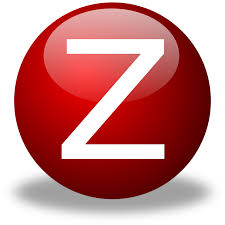Bibliographic Metadata for your web page
With Web 2.0, we see a radical change in scholarly communication. On the one hand, there is a growing need for researchers to be present on different web channels (blog, twitter, youtube, and much more). On the other hand, the more traditional ways of publications in high ranked peer review channels are still prevalent. It is difficult for researchers to meet this twofold challenge at the same time: After all the day has only 24 hours!
Double bind for ECRs
**Figure 1:** EURAXESS - Researchers in Motion is a unique pan-European initiative delivering information and support services to professional researchers.
Especially for young researchers (so-called Early Career Researchers, or ECRs1 is this situation alarming and even existence-threatening. The find themselves in a double-bind: Should they more invest in traditional ways of career planning, or is it more promising to expand and foster their internet presence? I do not have a clear solution for myself. I think a transition period, the most secure strategy is to follow both paths.
ECRs have both the most to gain and the most to lose from being at the forefront of changes to scholarly communications (Eve 2014; St. Louis 2015).
COinS and Zotero
**Figure 2:** Zotero is a free, easy-to-use tool to help you collect, organize, cite, and share research.
The only way I can think of to meet both challenges is to maximize the efficiency of all career moves. One of my aims with this blog on Open Science Education is to talk about technology supported new ways for research and publication to fulfill both requirements.
 With the following lines, I will show you how you can help your blog readers or website visitors to cite your posts and pages correctly and in way that they could count as a kind of publication.
With the following lines, I will show you how you can help your blog readers or website visitors to cite your posts and pages correctly and in way that they could count as a kind of publication.
My suggestion is
- to use the free research tool Zotero
- to produce a specific HTML code (COinS = Context Objects in Spans) and
- inject this code into your web page.
COinS is a microformat standard to embed bibliographic metadata for Embedding in HTML. COinS include as HTML code all the information necessary to cite a publication correctly. It works for every type of publication (books, papers, web pages).
**Figure 3:** Zotero is designed to store, manage, and cite bibliographic references, such as books and articles. It is available for Mac, Windows, and Linux.
There are several possibilities to generate COinS, but I will focus on Zotero. I am not going into further details here, but [I have prepared a tutorial](/tutorial/how-to-produce-bibliographic-metadata-for-you-web-page/) with images from all the necessary steps to produce, embed, and download COinS.
Visit my tutorial on \[How to produce bibliographic metadata for your web page?\](/tutorial/how-to-produce-bibliographic-metadata-for-you-web-page/)
References
Eve, Martin Paul. 2014. Open Access and the Humanities: Contexts, Controversies and the Future. Cambridge: Cambridge University Press. https://doi.org/10.1017/CBO9781316161012.
St. Louis, Scott R. 2015. “Open Access and the Humanities: An Interview with Dr. Martin Paul Eve (Right to Research Coalition).” The Right to Research Coalition Access to Research Is a Student Right. http://www.righttoresearch.org/blog/open-access-and-the-humanities-an-interview-with-d.shtml.

This work by Peter Baumgartner is licensed under a Creative Commons Attribution-ShareAlike 4.0 International License.
Permissions beyond the scope of this license may be available at http://notes.peter-baumgartner.net/contact.
Powered by the docdock theme for Hugo.
Privacy | Disclaimer


